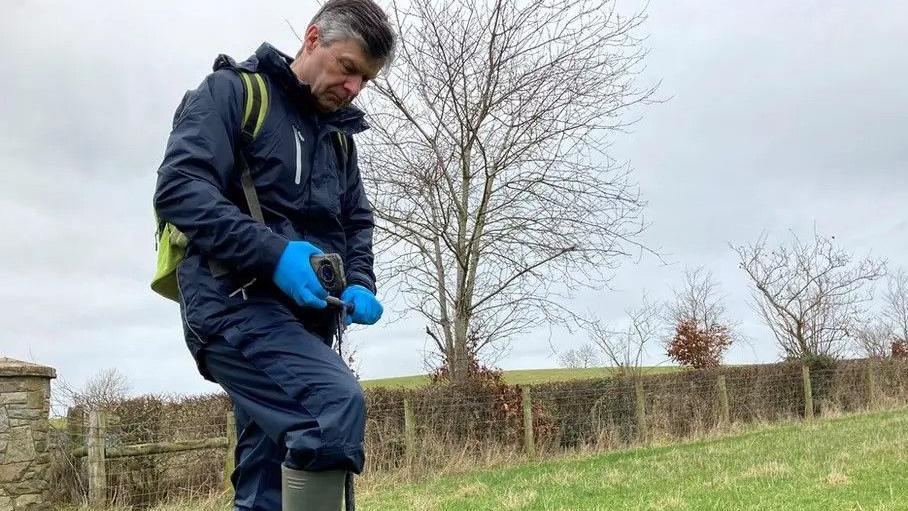Half of NI fields tested in world-first soil scheme

The free scheme is the first of its kind in the world and all 700,000 fields in Northern Ireland will be analysed
- Published
Almost half of the fields in Northern Ireland have been tested so far as part of a scheme to help farmers understand the nutrients in their soil.
Almost 70% of farms have registered for the Soil Nutrient Health Scheme, a scheme that is the first of its kind anywhere in the world.
The £37m programme is run by the Agri-Food and Biosciences Institute., external
It helps farmers understand the nutrient makeup of their soil, including nitrogen and phosphorus levels that can contribute to water quality problems and algal blooms in Lough Neagh through run-off.
Fertiliser can then be applied where it is needed and excess nutrients reduced over time.
The third year of the programme is getting under way in the north west.
Fields not previously sampled in zones one and two will also be tested.
Soil samplers walk every field they test in a W-pattern, lifting plugs of soil at set intervals.
Those plugs are then analysed to find out what the field already contains and where future nutrients should be applied.
Farmers get detailed maps of the results and training on what their fields need to reach optimum soil health for grass production.

Alex Higgins, the sampling programme project lead, said each farm was unique but that the pH balance of soil in zones tested so far was below recommended levels.
He said variations in the average pH between zones one and two reflected differences in how farms are used and "physical conditions, such as higher rainfall, as you move west".
However, he added that the average pH in both zones "sits below the optimum levels, which would be most effective at maximising nutrient uptake".
Making soil more neutral in acid-alkaline terms will also help reduce the run-off of nutrients like nitrogen (N) and phosphorus (P) to water bodies like Lough Neagh.
Scientists have said the amount of phosphorus already settled in the lough will take about 40 years to be naturally depleted.
The scheme’s scientific lead, Dr Rachel Cassidy, said the amount of phosphorus in the soils already tested was above the recommended level.
“Considering ongoing concerns over Lough Neagh, farmers are encouraged to carefully consider their P applications and to use the results in conjunction with the online run-off risk maps, which indicate areas of fields most at risk of nutrient loss during rainfall.”
By the time the scheme is completed in 2026, the aim is that all 700,000 fields in Northern Ireland will have been sampled and mapped.
Related topics
- Published19 April 2022

- Published26 June 2023
